26 Pro Death Penalty Quotes by Victims' Families of Slain Cops in the U.S.A
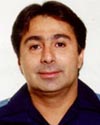
|
Facts of the Crime: On March 29, 2001, in San Antonio, Texas, Garcia fatally shot two victims, San Antonio Police Officer Hector Garza, 48, and Jessica Garcia, 21. The incident began as a domestic dispute between Garcia and Jessica, his wife. Officer Garza, who responded to the disturbance call, was the first victim. Garcia shot the officer three times, resulting in his death. Garcia then shot his wife six times resulting in her death. The couple's five-year-old daughter witnessed both murders. Garcia also shot and wounded the uncle of his wife during the incident. Garcia was sentenced to death in June 2002. Garza's family, in a statement through the San Antonio Police Department, said they didn't see the punishment as a cause for celebration. "Hector would be deeply saddened by the loss of another life," they said, calling the execution "a very necessary reminder that the citizens of this great state will not tolerate the murder of a Texas peace officer and the death penalty imposed must send a loud and clear message to those who would commit such an act." Summary: On the morning of March 29, 2001, Frank Garcia fatally shot uniformed San Antonio Police Officer Hector Garza and Garcia's wife Jessica inside the home Garcia shared with Jessica, their children, and Garcia's parents. After subsequently firing several shots at others outside the Garcia residence, wounding one person, and causing damage to a nearby elementary school, Garcia surrendered to police and gave a formal, written statement in which he admitted to intentionally killing both officer Garza and Jessica. The guilt-innocence phase of Garcia's capital murder trial commenced on February 4, 2002. In addition to the testimony summarized above, Garcia's jury also heard testimony from forensic and firearms experts regarding (1) the MAC-10 semi-automatic weapon and the Egyptian-made AK-47 assault rifle Garcia used to shoot Officer Garza and Jessica, (2) ballistics evidence about the shell casings and bullet fragments found at the crime scene, and (3) testimony regarding the blood, blood spatter, and other trace evidence recovered from the crime scene and Garcia's clothing. The foregoing testimony corroborated those portions of Garcia's written statement in which he admitted to having emptied both the semi-automatic pistol and assault rifle following his fatal shooting of Officer Garza and Jessica. The defense presented no witnesses or other evidence during the guilt-innocence phase of Garcia's capital murder trial. On February 8, 2002, after deliberating less than three hours, Garcia's jury returned a verdict of guilty. The autopsy of Officer Garza revealed (1) he died as a result of four gun shot wounds, each of which would have been fatal alone, (2) the four shots struck Garza, respectively, in the head, two in the back of the neck, and one in the abdomen, which penetrated the lungs and aorta, (3) the shot through Garza's chest was likely the first to strike him, (4) the shots to Garza's chest and head came from a non-high-velocity weapon, and (5) the two shots which struck Garza in the neck came from a high velocity weapon, exited through the skull, and caused massive damage to the brain and cranial vault. The autopsy performed on the body of Jessica Garcia revealed (1) she died as a result of three gunshot wounds, only one of which would have been fatal alone, (2) the fatal gunshot struck Jessica in the left forehead, fractured her orbital area, and penetrated through the midbrain, (3) the two, non-fatal shots struck her in the right cheek and her chin, (4) all the gunshots which struck Jessica came from a non-high-velocity weapon, and (5) the latter two gunshot wounds likely struck Jessica while she was down on the floor. Several witnesses testified to having personally witnessed Garcia firing two different weapons at persons located outside the Garcia residence on the morning of the fatal shootings. A friend of Jessica testified (1) an emotional Jessica called her on the morning of the fatal shootings and asked her to help Jessica move out, (2) after securing assistance from John and Rosario Luna, she rode with the Lunas to Jessica's residence, (3) Garcia's mother interfered with their efforts to help Jessica remove clothing and other personal items from the Garcia residence, (4) she overheard Jessica telling Garcia over the phone that Jessica was leaving him, (5) Garcia arrived at the Garcia home before the police and Garcia grabbed Jessica in a head lock and dragged her back inside the Garcia home, (6) moments later a police officer walked inside the Garcia home, (7) a few minutes after the officer entered the house, she heard three-to-four shots in rapid succession come from inside the house, (8) after a pause, she heard a second series of approximately three shots come from inside the house, (9) Garcia then emerged from the house, pointed a firearm, and fired several shots, at least a few of which struck their vehicle, (10) Garcia fired at her and John Luna as they attempted to flee the scene toward a nearby elementary school, (11) Garcia went back inside the house and she heard several more shots, (12) Garcia emerged from the house a second time holding a big rifle and fired that weapon, striking the truck behind which she was hiding, i.e., the same truck Garcia had driven to the scene, and (13) she saw Garcia chasing after John Luna as she fled for the safety of the school. The then-vice-principal of the nearby Emma Frey Elementary School testified (1) she noticed a police vehicle in front of the Garcia residence when she arrived at school around 7:30 that morning, (2) she later noticed the police vehicle was gone when she saw Jessica outside the Garcia residence between 8:45 and 8:50, (3) around nine a.m. she was alerted to a problem by other staff, (4) as she exited the campus building near the Garcia residence, she saw a man later identified for her as John Luna running toward her who was yelling "Get out of here. He's shooting at everyone," (5) she looked toward the Garcia residence and saw a man in the yard holding a rifle, who then pointed it at her or in her direction, (6) as she and Luna attempted to flee away from the Garcia residence, she heard four shots, (7) the school custodian let her and Luna inside the school, (8) once inside the school, she climbed to the second floor, ordered the school locked down, telephoned school district police, and looked out and saw Garcia with the rifle in the front yard of the Garcia residence walking away from the school, and (9) subsequent examination of the school's exterior disclosed several indentations in the front doors, as well as a hole in a window screen that had not been present before the shootings. The San Antonio Police Officer who arrested Garcia testified (1) he knocked repeatedly and announced himself before entering the Garcia residence, (2) he heard a box of bullets hit the floor and footsteps running his direction, (3) he heard a rifle racking and smelled gunpowder and blood, (4) Garcia came out and pointed an assault rifle at him, (5) when Garcia saw the officer's weapon, Garcia retreated, shouted "I give up," and threw down his rifle, and (6) Garcia thereafter offered no resistance. In his five-page, formal, written statement executed only hours after the fatal shootings, Garcia admits he deliberately fired at officer Garza's head multiple times and then turned his weapon on his wife. The San Antonio Police Department said in a statement on behalf of Garza's family that the officer was a devoted husband and father committed to protecting his community. "Though the execution does not bring complete closure to Hector's family, as we all miss him dearly, it comforts us to know that Frank Garcia will never destroy another family," the statement said. |
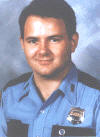
|
Summary: Ogan worked as a DEA informant in the Houston area. Despite explicit instructions to possess no deadly weapons, Ogan stepped out of his motel after an argument over long distance calls, armed himself, and walked across the street to a police car that had pulled over a vehicle for a traffic stop. Ogan went to the side of the police car and knocked on the window. Officer James C. Boswell rolled down his window and asked what Ogan wanted. Ogan responded, "DEA dropped me off out here, and I'm cold." Officer Boswell told Ogan to back away from the car until the officers finished the traffic stop. When Ogan persisted, demanding that Boswell give him immediate assistance, Officer Boswell took his gun from the holster and, holding it behind his right leg, reached into the police car to unlock the back door. Ogan then, without warning or provocation, shot Officer Boswell in the head. After seeing his partner fall against the back door of the police car, Officer Gainer chased and caught Ogan, wounding him in the process. Boswell's mother, three brothers and a sister remained silent during Ogan's final statement, but spoke briefly to reporters afterward. "He didn't say anything he hadn't already said," Martha Boswell, the slain officer's mother, said. "It didn't surprise me; I was OK with it." Martha Boswell called Ogan "Jim's judge, jury and executioner, without a second thought." "(Tuesday) is the night justice was finally served, plain and simple," she said. "It's way past time." Boswell's father Sonny, confined to a wheelchair, waited outside the "Walls" Unit with nearly 80 motorcyclists who came to show their support for the Boswell family. Most of the motorcyclists were members of the Houston Police Department or Harris County Sheriff's Department and included Gainer, Boswell's partner. "It's time. It's just time," Gainer said. "I want justice to be done," Sonny Boswell said as he clutched a picture of his son. "The State of Texas pronounced sentence on him, and I think it should be carried out." Ogan's execution took place after the Supreme Court rejected two appeals filed on his behalf. The Texas Board of Pardons and Paroles also declined to block the execution. As Ogan went to his death, about 80 law enforcement officers and their sympathizers -- members of two Houston motorcycle clubs -- gathered at the Walls Unit to show support for Boswell's family. "Justice was finally served tonight," said Martha Boswell, the slain officer's mother. "We have waited for this 12 years. . . . I had faith this would happen, and it did." She said she felt no compassion in watching her son's killer die. "Nothing has changed," she said of her feelings. |
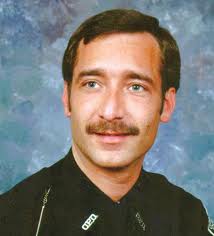
|
Summary: Ivey and Vincent Neuman escaped from jail in Alabama, where Ivey was being held on a murder charge. They stole a truck and drove to South Carolina, ending up in Neuman's hometown of Columbia. There they kidnapped businessman Robert Montgomery, who was working downtown. Ivey and Neuman drove Montgomery to rural Orangeburg County. Neuman later testified that while there, Ivey shot Montgomery in the head and chest, leaving his body to be discovered by hunters. Two days later the pair visited a mall in Orangeburg, where a clerk accused them of trying to pass a stolen check. Officer Tommy Harrison responded to the call but let Ivey go when he realized Neuman was trying to use the check. Ivey told police a handgun in his pocket fired accidentally as he walked away, and the bullet ricocheted off the floor, hitting Harrison in the leg. Ivey said he then panicked, shooting the officer five more times. Neuman testified against Ivey and is serving a life sentence for murder in South Carolina. The Harrison family declined to speak after the execution. But Harrison’s brother-in-law, T&D Staff Writer Richard Walker, attended the execution. “We agree with the sentence wholeheartedly. At this point, we no longer have to worry about Ivey receiving another appeal or hearing to review his case. Now, we can just focus on Tommy and Shaye (Harrison’s late wife) and their memory and Mr. Montgomery,” Walker said. |
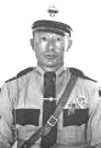
|
Summary: Tim Hudson was a Pecos County Deputy Sheriff, nine months shy of his retirement when he was sent out on a call that two men had stolen $22 worth of gas from a service station near Bakersfield. Around midnight, Hudson attempted to pull over a van that matched the description of the vehicle. Unbeknownst to Hudson, the stolen van carried two escapees from Kansas, Charles Edward Smith and his cousin Carroll Bernard Smith. The pair had escaped from a work-release center a week earlier, and had stolen the van along with a .357 magnum revolver in Houston and were headed for New Mexico. As Hudson tried to pass the van on the left, Charles Smith fired three shots into the car. One of the shots struck Tim Hudson in the side, killing him. The shooting prompted an extensive manhunt across West Texas that ended with a police chase and shootout. Upon arrest, Smith gave a complete confession, including a statement that it has been his lifelong dream to kill a cop and that he felt like his life was complete now. Three different juries convicted Smith of the murder and three times he was sentenced to death as a result of two reversals on appeal. "He won't kill anyone else. We
can guarantee that 100 percent," Gwynn Hudson Simmons said after watching
Smith die. Simmons' father, Tim Hudson, was the Pecos County sheriff's deputy
fatally wounded by Smith in August 1988. "When you
have somebody who showed no remorse and actually bragged about killing a police
officer, ... what can be said? I had no desire to talk to him and I don't think
there was anything he could have said to me to make any difference." |
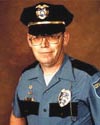
|
Summary: James D. Mitchell Jr., 42, an Amarillo police officer, had just finished his shift and was driving home, still in uniform. Mitchell saw Hafdahl's car swerve around his truck and watched as it veered off the road. He stopped to investigate. When he saw Hafdahl running away, he ordered him to stop. With his revolver drawn, Mitchell pursued Hafdahl through the yard until Hafdahl was stopped by a locked gate. Hafdahl then turned and killed Mitchell at close range with four shots from his 9 mm semi-automatic pistol. Mitchell never returned fire. After shooting Mitchell, Hafdahl fled the scene, only to turn himself in later that night. Shawn David Terry, 22, was arrested near the scene of the shooting. Daniel Louis Helgan, 24, was arrested later in New Mexico. Dr. Ralph Erdmann, a forensic pathologist, reconstructed the crime scene at trial and testified that based on the distance and angle from which each shot was fired, only one shot (the one in Mitchell's wrist) could have been fired when Mitchell was standing. Daniel Helgran received a sentence of one year's probation for failure to stop and render aid. After Hafdahl's trial, Dr. Ralph Erdmann pleaded guilty to perjury and tampering with government records in other cases he testified in. The widow and daughters of slain policeman James Mitchell came to Canyon to see a judge set the execution date for the killer of their husband and father. "After 16 years it's about time. We have been through it every step of the way, and I'm looking forward to reaching a conclusion. It has taken a toll on my family," said Ellen Mitchell Stone, the widow of Amarillo Police Department Sgt. James Mitchell. "My girls were 8 and 9 when their father was killed. Now, they have graduated from college, are married and have jobs." After Thursday's execution, the husband of Mitchell's daughter, Dean Clapper, read from a prepared statement. "Tonight's execution cannot begin to erase the years of heartache, grief and emotional loss that Hafdahl's actions have caused our family," Clapper said. "Never to be regained is the innocence of two children, the loss of childhood memories or recover the loss of a loving husband and father.”In conclusion, our family has stood together facing the most evil of individuals. Tonight, we have finally obtained peace." |
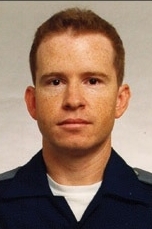
|
"I'm feeling relief," she said later, "almost like we held our breath for 12 years and now we can let it out." |
|
Summary: Off-duty security guard Roxanne Ruddell was fishing alone at Point 6 near Norman when she was spotted by Gilbert and his 16 year old accomplice, Eric Elliott. They forced her to a nearby wooded area where she sat under a tree as they rummaged through her purse, took her keys and stole $2 or $3. Ruddell told the pair she wouldn’t call police if they didn’t hurt her, but Gilbert reportedly thought she was lying and grew angry. Elliot tied Ruddell’s hands and Gilbert shot her three times in the head and once in the back of the neck. Her truck was later found in New Mexico where Gilbert and Elliott were discovered sleeping three days after the murder. Although Gilbert’s trial was restricted to evidence surrounding Ruddell’s death, the killing was part of a cross-country crime spree that began in Ohio in August 1994, when an elderly Port Washington, Ohio, woman, Ruth Lucille Loader (79), was discovered missing from her home, along with her car. In police interviews after his arrest, Gilbert confessed to having killed Loader. Her body has not been found, and Gilbert was never tried for the crime. Loader’s car was found abandoned in a pasture near the farmhouse of William Brewer (86) and Flossie Mae Brewer (76) near Kingdom City, Mo. Relatives of the Brewers found the couple in a basement wood room. Both had been shot in the head. Gilbert was convicted of murdering the Brewers and handed another death sentence in Missouri. In a separate Oklahoma trial, Elliott also was convicted of Ruddell’s murder and sentenced to life without parole. Fourteen friends and family members of slain security guard Roxanne Ruddell and the Brewers witnessed the execution. After it was over, Ruddell’s husband, Eddie Ruddell, said he finally had closure. The Brewers said they did, too. “It brought some relief to both our families,” Eddie Ruddell said. “Right now he’s up there having to testify to what he did to God. We know where our loved ones are — they’re with God.” |
|
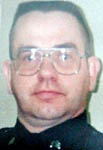
|
Lynda Lyon Block’s case: Block, 54, and her common-law husband, George Sibley Jr., were on the run after failing to appear on a domestic battery charge. With Block's 9 year old son in the car, they stopped so Block could use the telephone in a Walmart parking lot. Opelika Police Sergeant Roger Lamar Motley had just finished lunch and was shopping for supplies for the jail when a woman came up to him and told him there was a car in the parking lot with a little boy inside. The woman was worried about him. She was afraid that the family was living in their car. Would he check on them? Motley cruised up and down the rows of parked cars and finally pulled up behind the Mustang. Sibley was in the car with the boy, waiting for Block to finish a call to a friend from a pay phone in front of the store. Motley asked Sibley for his drivers license. Sibley said he didn't need one. He was trying to explain why when Motley put his hand on his service revolver. Sibley reached into the car and pulled out a gun. Motley uttered a four-letter expletive and spun away to take cover behind his cruiser. Sibley crouched by the bumper of the Mustang. People in the parking lot screamed, hid beneath their cars and ran back into the store as the men began firing at each other. Preoccupied by the threat in front of him, Motley did not see Lynda Block until the very last moment. She had dropped the phone, pulling the 9mm Glock pistol from her bag as she ran toward the scene, firing. Motley turned. She remembered later how surprised he looked. She kept on firing. She could tell that a bullet struck him in the chest. Staggering, he reached into the cruiser. She kept on firing, thinking he was trying to get a shotgun. But he was grabbing for the radio. "Double zero," he managed to say -- the code for help. He died in a nearby hospital that afternoon. In letters to friends and supporters, Block later would describe Motley as a "bad cop" and a wife beater with multiple complaints against him. As part of the conspiracy against her, she said, she was prohibited from bringing up his record in court. His personnel file makes no mention of any misbehavior. His wife says he was a kind and patient man. Both Block and Sibley received death sentences. True to their "patriot" ideologies, Block waived her appeals. She has refused to accept the validity of Alabama’s judicial system, claiming that Alabama never became a state again after the Civil War. She has been completely non-cooperative with her court-appointed attorney, who nevertheless attempted to work against her death sentence. First execution of a female in Alabama since 1957. She is the 9th female executed in the U.S. since reinstatement of the death penalty in 1976. George Everette Sibley Jr. case: Lynda Lyon Block and her common-law husband, George Sibley Jr., were on the run after failing to appear on a domestic battery charge. With Block's 9 year old son in the car, they stopped so Block could use the telephone in a Walmart parking lot. Opelika Police Sergeant Roger Lamar Motley had just finished lunch and was shopping for supplies for the jail when a woman came up to him and told him there was a car in the parking lot with a little boy inside. The woman was worried about him. She was afraid that the family was living in their car. Would he check on them? Motley cruised up and down the rows of parked cars and finally pulled up behind the Mustang. Sibley was in the car with the boy, waiting for Block to finish a call to a friend from a pay phone in front of the store. Motley asked Sibley for his drivers license. Sibley said he didn't need one. He was trying to explain why when Motley put his hand on his service revolver. Sibley reached into the car and pulled out a gun. Motley uttered a four-letter expletive and spun away to take cover behind his cruiser. Sibley crouched by the bumper of the Mustang. People in the parking lot screamed, hid beneath their cars and ran back into the store as the men began firing at each other. Preoccupied by the threat in front of him, Motley did not see Lynda Block until the very last moment. She had dropped the phone, pulling the 9mm Glock pistol from her bag as she ran toward the scene, firing. Motley turned. She remembered later how surprised he looked. She kept on firing. She could tell that a bullet struck him in the chest. Staggering, he reached into the cruiser. She kept on firing, thinking he was trying to get a shotgun. But he was grabbing for the radio. "Double zero," he managed to say -- the code for help. He died in a nearby hospital that afternoon. In letters to friends and supporters, Block later would describe Motley as a "bad cop" and a wife beater with multiple complaints against him. As part of the conspiracy against her, she said, she was prohibited from bringing up his record in court. His personnel file makes no mention of any misbehavior. His wife says he was a kind and patient man. Both Block and Sibley received deeath sentences. True to their "patriot" ideologies, Block waived her appeals and was executed on May 10, 2002. She and Sibley have refused to accept the validity of Alabama’s judicial system, claiming that Alabama never became a state again after the Civil War. Both have been less than cooperative with court-appointed attorneys. "Lyon-Sibley Dies In The Alabama Electric Chair," by Robert Anthony Phillips. (May 10, 2002) ATMORE, AL - (May 10, 2002) -- Cop killer Lynda Lyon-Sibley, making no last statement and appearing to pray silently with her eyes shut, became possibly the last person to be executed in the electric chair in Alabama early Friday morning. Wearing white prison issues, her head shaved and face covered in a black veil, Lyon-Sibley was strapped into “Big Yellow Mama,” the macabre name given to the electric chair, at 12:01 a.m. and received two jolts of electricity over two minutes. “She was read the death warrant (while strapped to the chair) and asked if she had a final statement,” said Brian Corbett, an Alabama Corrections Department spokesman who witnessed the execution. “She said, ‘No,’ and that was that.” “I can tell you her demeanor was stoic,” said Corbett. “She displayed no emotion. She had very wide eyes with a defiant look on her face. She did make eye contact with our commissioner (Corrections Commissioner Michael Haley) and it looked like she was trying to stare a hole straight through him.” Corbett said that one 2,500 volt jolt of electricity was sent through Lyon-Sibley’s body for 20 seconds and a second jolt of 250 volts was sent through her for 100 seconds. Corbett said that he saw steam rise from the wet sponge placed under the electrode on her left leg. A reporter from the Birmingham News newspaper wrote in her story that Lyon-Sibley “clenched her fists, her body tensed” as the electricity rammed into Lyon-Sibley’s body. Lyon-Sibley, a former Cub Scout mom and library volunteer in Orlando, Fla., was pronounced dead at 12:10 a.m. Lyon-Sibley, who is listed in prison records as Lynda Block, became the first woman put to death in Alabama since 1957, when Rhonda Martin was executed in the electric chair for poisoning her husband. Before Lyon-Sibley was executed, the condemned woman spent time in an isolation cell with three visitors from Florida. Her spiritual advisor, a former chaplain at Tutwiler Correctional Facility, where she was held before her execution, was with her, Corbett said. The execution, at Holman Prison here, marked both the end of Lyon-Sibley, an anti-government activist, and the end of the Alabama electric chair as the official execution device in the state. Alabama is officially switching to lethal injection on July 1, now leaving only Nebraska as the only state that will still use electricity to kill convicted murderers. Condemned men or women in Alabama, however, can still choose to die in the electric chair if they choose. For Kirkwood, the execution marked the end of a 12-year ordeal. "I am ready to just close this chapter of my life and go on. I believe justice was served," she said. The victim's mother, Anne Motley, said, "Thank the good Lord I had a son like mine and not like George Sibley." |
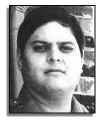
|
Summary: Following a January 7, 1986 robbery of Tom’s Market on 1000 N.E. 36th Street in Oklahoma City, the suspects stopped at a gas station, and Boyd got out to use a pay phone. Oklahoma City Officer Richard Riggs, 32, stopped to investigate and ordered Boyd to take his hands out of his pockets. With his hands still concealed in the pockets of his coat, Boyd shot Officer Riggs in the abdomen. Boyd then placed the gun against the chest of Officer Riggs and fired a second shot, killing him. A passing motorist testified that he saw the guy on the phone fire at the police officer. Along with his rookie partner, Riggs managed to return fire. Boyd claimed a hitchhiker took the gun from his knapsack and shot Riggs. He said there was no gunpowder residue on his hands, but prosecutors said Boyd was arrested a day after Riggs was killed and had ample time to wash his hands. Accomplice Lenora Dunn pled guilty and was sentenced to 40 years in prison. "I promised Richard as I stood over his coffin that I would live to see this day," Riggs' mother, Betty Riggs, said hours before the execution. "I had to keep my promise to Richard and now I can go to the cemetery and I'll tell him." |
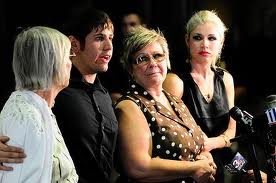
|
Anti-death penalty activists, who also claim Davis was wrongly convicted, chanted and held banners through Atlanta on Friday - but Mr MacPhail’s mother Anneliese remains convinced Davis is guilty. ‘I will never have closure,’ Ms MacPhail told CNN. ‘But I may have some peace when he is executed.’ Prosecutors and MacPhail's family said justice had finally been served. "I'm kind of numb. I can't believe that it's really happened," MacPhail's mother, Anneliese MacPhail, said in a telephone interview from her home in Columbus, Ga. "All the feelings of relief and peace I've been waiting for all these years, they will come later. I certainly do want some peace." She dismissed Davis' claims of innocence. "He's been telling himself that for 22 years. You know how it is, he can talk himself into anything." Officer MacPhail's widow, Joan MacPhail-Harris, said it was "a time for healing for all families." "I will grieve for the Davis family because now they're going to understand our pain and our hurt," she said in a telephone interview from Jackson. "My prayers go out to them. I have been praying for them all these years. And I pray there will be some peace along the way for them." "Justice was finally served for my father," said Mark MacPhail Jr., who was an infant when his father was gunned down. "The truth was finally heard." MacPhail's relatives said they were relieved by the decision. "That's what we wanted, and that's what we got," said Anneliese MacPhail, the victim's mother. "We wanted to get it over with, and for him to get his punishment." |
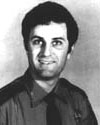
|
Summary: On Friday, April 10, 1987, Mississippi Highway Patrol Officer David Bruce Ladner, was patrolling on Interstate 10, when he pulled over a Lincoln driven erratically and speeding. Hansen was driving the Lincoln and his girlfriend, Anita Louise Krecic was also in the vehicle. During the stop, Trooper Ladner asked for permission to search, and both Hansen and Krecic consented, giving fictitious names. In the process, Ladner took the keys to the Continental and placed them in his pocket. It is unclear exactly what happened next, but, at some point, Hansen drew a .38 caliber pistol and shot at Trooper Ladner. To avoid the fire, Ladner ran around the car and dropped to the ground, in an apparent attempt to roll underneath. Hansen managed to get off two shots at close range, each striking Ladner in the back. Still, Ladner managed to get up and make it to the median strip, where a passing motorist took him to the hospital. He died two days later. Hansen had 10 prior felony convictions and had served time in Florida. Krecic was also convicted and sentenced to life imprisonment. "I don't want my two children to grow up in a world with no justice," Damon Ladner said last week as his stood beside the manicured grave site where the slain trooper is buried. "My father gave his life so we could have freedom and justice." And after 15 years, the Ladner family says justice will be done. Ladner's killer, Tracy Alan Hansen, 39, has run out of appeals and, barring a last-minute reprieve, will die Wednesday for his crime. Bruce Ladner's family members say they take no joy in his execution, but his death by lethal injection is justified. Damon Ladner said he's not looking for vengeance. Hansen should be put to death not only for what he did to Bruce Ladner and law enforcement, Damon Ladner says, but because the justice system has deemed it so. |
|
Summary: Bradford entered a Dallas grocery store with accomplice Vandron Seymore. Bradford pulled a pistol from his waistband and shot security guard Brian Williams in the back. Next, he turned the gun toward a clerk, who ran behind some displays. He then fired three more times at Williams. Bradford was attempting to open the cash register when he yelled at Seymore to take Williams' money. Seymore took seven dollars and some personal items from Williams. They then left the store together. Bradford's girlfriend testified that just before the killing, Bradford showed her a gun and said he was leaving their apartment to "make some money". When Bradford was arrested, police found three guns, crack cocaine, and marijuana in his home. He gave police a voluntary statement, and at trial testified that he went to the store with the intent of committing a robbery. He said that his gun went off unintentionally, however, and then he kept shooting at Williams in self-defense, because Williams was reaching for a gun. The prosecution's main evidence was the recording of the shooting and robbery made by the store's security camera, which showed Bradford shooting Williams in the back without warning. At the time of the murder, Bradford was on parole for a robbery conviction two years earlier. Williams’ brother Greg released a statement
on the family’s behalf. “Justice for Brian Edward
Williams has been served. Our family would like to thank everyone with the
Dallas Police Department and the Dallas County District Attorney’s office who
assisted in the investigation, apprehension and conviction of Brian’s killer.
We thank all of our friends and loved ones who have given their prayers and
support to us. “We have no anger towards Mr. Bradford and forgive him of his
crime against our family. We now turn our thoughts and prayers to Mr.
Bradford’s family, as they now grieve the loss of their loved one.” |
|
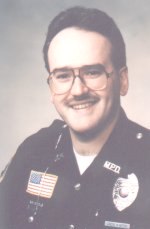
|
Summary: Muncie Police Officers were dispatched to a traffic accident and observed an abandoned utility truck. The truck was towed and Lambert was found nearby crawling under a vehicle. Lambert had spent most of the night getting drunk and after telling officers he was trying to sleep, was arrested by Officer Kirk Mace for Public Intoxication. He was patted down and placed into the back of a police car driven by Officer Gregg Winters for transport to jail. A few minutes later, the police vehicle was observed sliding off the road into a ditch. Lambert was still handcuffed in the backseat and Officer Winters had been shot 5 times in the back of the head and neck. A .25 handgun was found laying on the floorboard. It was later learned that Lambert had stolen the .25 pistol from his employer. A demonstration/re-enactment video was introduced into evidence showing the manner in which a gun could be retrieved and fired while handcuffed. A statement by the defendant was admitted despite his .18 BAC. Molly Winters hugged supporters outside the prison soon after Lambert’s death was announced and said she was relieved it was over. “Justice has been served,” she said. “You look at all the blue lights behind you. It shows you that Gregg has not been forgotten and everything he stood for.” Lambert’s execution came about nine hours after the U.S. Supreme Court rejected, without commenting, his final appeal. Gov. Mitch Daniels on Wednesday had denied his clemency petition. Terry Winters, the slain officer’s brother and deputy chief of the Muncie Police Department, witnessed the execution under a state law that took effect last year giving relatives of murder victims that right. “It was not an easy thing, but his death was a lot smoother than what my brother’s was,” Terry Winters said of watching the lethal injection. “His punishment for that crime was death and it’s been carried out. And that’s the end of it.” |
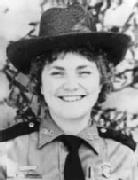
|
Park's sister Betsy, who witnessed the execution with her mother and brother, said that Grossman's apology was "long overdue" and she was glad to hear it. "We came here today hoping for closure and an end to the years of reminders of how Peggy died overshadowing the memories of how she lived," she said. "I believe we realized that hope today." |

|
Lancaster said he forgave Centobie long ago for shooting him, but he said death is a fair and just punishment. "I'll be saddened by the loss of a human life," said Lancaster, who at the request of the Turner family will be present at Centobie's execution. "But I also know we have to be judged on our past actions. And he has proven to be a true, substantial threat to society." The shooting changed Lancaster's perspective. Before his encounter with Centobie, he was looking forward to retirement. After he recovered from the shooting, he appreciated his workday more, and spent much of his time telling other officers what happens during such incidents. "At times we need to stop and remember that nobody is guaranteed tomorrow," he said. "We make plans for the future, but we can't look to the future for what we see as our happiness. We have to see each day as it comes and see whatever joy and peace we can in that day." Turner's widow, Brandy Phillips, said she is glad that Centobie will soon die because he will not be able to escape again and threaten the public. "It's a constant worry right now that he is going to escape and hurt another police officer or an innocent victim," said Phillips, who has since remarried. "I am sad that somebody is losing a father and somebody is losing a son. He has a mother, and I know it is hard on her." |

|
Summary: Texas Department of Public Safety Trooper Bill Davidson stopped a vehicle on U.S. 59 in Jackson County for having a broken headlight. The driver of the vehicle, Ronald Ray Howard, shot Davidson in the neck. The vehicle Howard was driving was stolen. Howard fled the scene of the shooting, but he was arrested within a couple of hours with the murder weapon, a nine millimeter handgun loaded with hollow point bullets, in his possession. Howard confessed to killing the trooper and repeated his confession to a grand jury. Linda Davidson,
Bill's widow, asked people to remember what a wonderful man her husband was -
not what kind of person Howard could have become. “It
helps knowing the son of a bitch got what he deserved,” she said of
Howard. “Today justice has been served. It's real
frustrating - the wheels of justice turn very slowly.” |